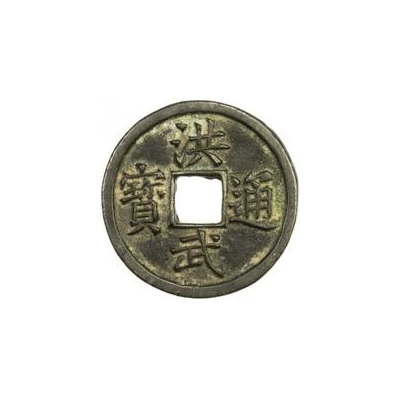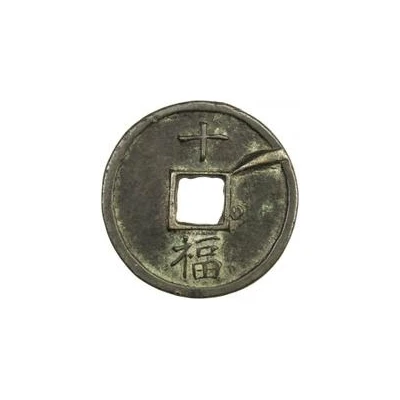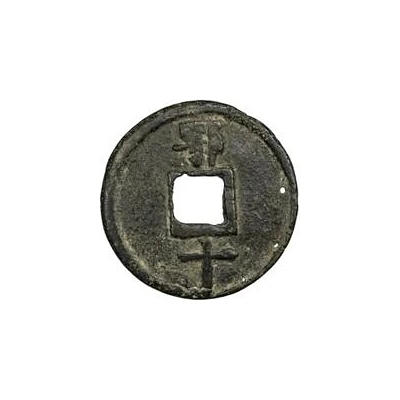


© Stephen Album Rare Coins
10 Cash - Hongwu Tongbao; Fu ND
| Bronze | 24.85 g | 46 mm |
| Issuer | Empire of China |
|---|---|
| Emperor | Ming dynasty › Hongwu (明太祖) (1368-1398) |
| Type | Standard circulation coin |
| Years | 1368-1393 |
| Value | 10 Cash |
| Currency | Cash (621-1912) |
| Composition | Bronze |
| Weight | 24.85 g |
| Diameter | 46 mm |
| Shape | Round with a square hole |
| Technique | Cast |
| Orientation | Medal alignment ↑↑ |
| Demonetized | Yes |
| Updated | 2024-10-04 |
| Numista | N#222114 |
|---|---|
| Rarity index | 100% |
Reverse
One Chinese ideogram below and value above.
Script: Chinese (traditional, regular script)
Lettering:
十
福
Translation:
Shi / Fu
10 Cash / Fujian (mint)
Edge
Plain
Comment
Casting of Hongwu coins started in 1368, but was not continuous. Large coins were discontinued in 1371, with all minting being suspended from 1375 to 1376, then again from 1387 to 1389 (that time due to a copper shortage). Minting was finally stopped again in 1393 in favour of paper money.Interesting fact
One interesting fact about the Standard circulation coin 10 Cash - Hongwu (Tongbao; Fu) ND (1368-1393) from Empire of China made of Bronze weighing 24.85 g is that it was used as a form of currency during the Hongwu Emperor's reign, who was the founder of the Ming dynasty. The coin was first introduced in 1368 and was used until 1393. It was made of bronze and had a round shape with a square hole in the center. The coin was divided into 10 sub-units called "cash," and it was used for small transactions and daily expenses. The coin was also used as a symbol of power and authority, and it was often given as a gift to officials and nobles. Today, this coin is considered a rare and valuable collector's item, and it is highly sought after by numismatists and historians.

